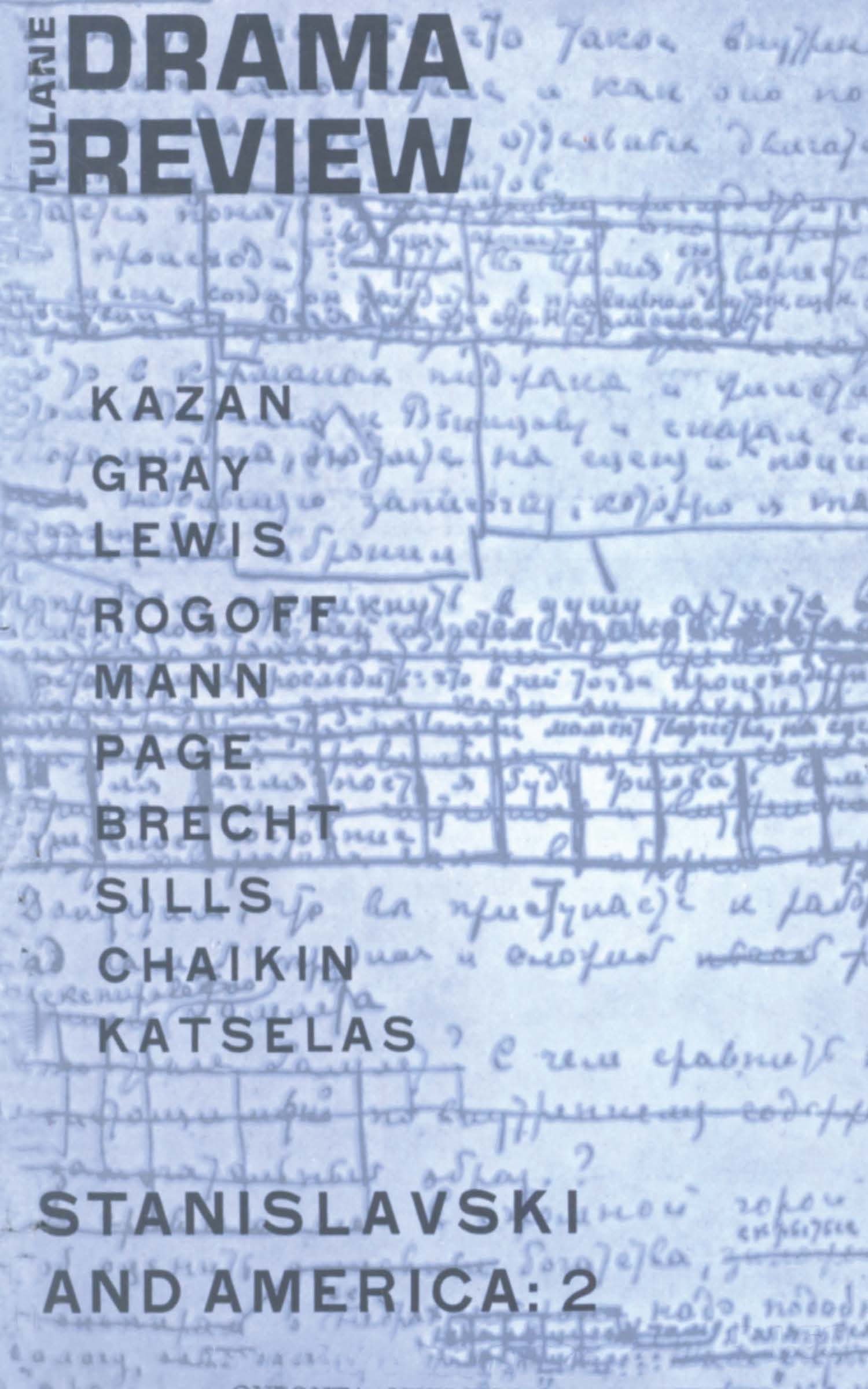No CrossRef data available.
Article contents
Italian Theatre Since the War
Published online by Cambridge University Press: 14 February 2022
Extract
Vito Pandolfi, born in 1917, is a leading Italian theatre critic, historian, and director. The article we are publishing was taken in part from his book, Contemporary Italian Theatre (Teatro italiano contemporaneo, Milan, 1959). Pandolfi revised and updated his analysis for TDR. A graduate of D'Amico's Accademia d'Arte Drammatica, Pandolfi has directed plays by Tasso, Goethe, Lorca, and Moravia, as well as adapting and directing The Masks’ Fair (La fiera delle maschere, 1947), derived from commedia dell'arte scenarios. His best known scholarly work is the five-volume study of commedia texts and history, La commedia dell'arte (Florence, 1956-1959). Pandolfi's critical method springs both from his Marxism and from his conviction that the Italian theatre no longer reflects Italian society accurately because working-class characters are excluded from most Italian plays. Pandolfi's theatre criticism is indicative of a very strong current in today's Italian thought.
- Type
- Research Article
- Information
- Copyright
- Copyright © The Tulane Drama Review 1964
References
1 Curzio Malaparte (pseudonym of Curzio Suckert, 1898-1957) was to the year of his death the enfant terrible of Italian literature. He wrote poetry, novels, short stories, plays, and essays. His best known works are the novels Kaputt (Naples, 1944) and The Skin (La peau, Paris, 1948), which reflect the ease with which, having been a supporter of fascism, he became a top liaison officer for the American occupation forces. One critic said of Malaparte that “his themes are always rooted in a vital problem of the moment and are treated with great intelligence and with cunning adherence to the public's response.”—Gino Rizzo.
2 Giuseppe Giacosa (1847-1906) is one of the best known Italian playwrights of the nineteenth century. He moved from sugary Romanticism à la Musset towards French Naturalism. Two of his best-known plays are Unhappy Loves (I tristi amori, 1888) and Leaf-like (Come le foglie, 1900). When Pandolfi says that Giocosa typifies nineteenth-century mores, he probably is thinking of the belle époque atmosphere of his plays—that is, the bourgeois values of a relatively affluent and morally “sane” society before the shocks of the world wars, fascism, and communism.—Gino Rizzo.
3 Leo Ferro's Angelica and Ignazio Silone's still unproduced He Went into Hiding (Ed egli si nascose) are exceptions which failed to attract attention despite their value.
4 The “ideology” is the clerical encroachment Pandolfi sees in the rise to power of the Christian (i.e., Catholic) Democrats, who remain more or less in power today.—Gino Rizzo.
5 The Italian titles and dates for these plays are, respectively: Franna allo scalo nord, 1936; Corruzione al palazzo di giustizia, 1948; Lotta, fina all'alba, 1949; and Spiritismo nell'antica casa, 1950.—Gino Rizzo.
6 The Italian titles and dates for these plays are, respectively: Il pellicano ribelle, 1953; Uno cantava per tutti, 1949; and Come un ladro di notte, 1953.—Gino Rizzo.
7 Only the regional dialect theatre kept in close touch with the realities of the people; and the dialect theatre evolved in its own closed circle. This is the centuries-old problem of our theatre: how to evolve from dialect, which has had moments of greatness, to a national language, without becoming ossified in a purely literary speech. Every generation resumes this labor of Sisyphus, which was the task of Machiavelli, Goldoni, Verga, and Pirandello. Unfortunately, the success of these writers is isolated; no works have followed them to develop a continuity and tradition. In the post-war period, attempts to assimilate the spoken languages into a national rather than regional idiom have been undertaken only infrequently. Massimo Bontempelli's Nimbus (Nembo, 1958) and Hunger (Fame, 1949) tried to follow Pirandello's lead in using a language free from the encrustations of the past. But Bontempelli's work was hostilely received, and no one followed him.


